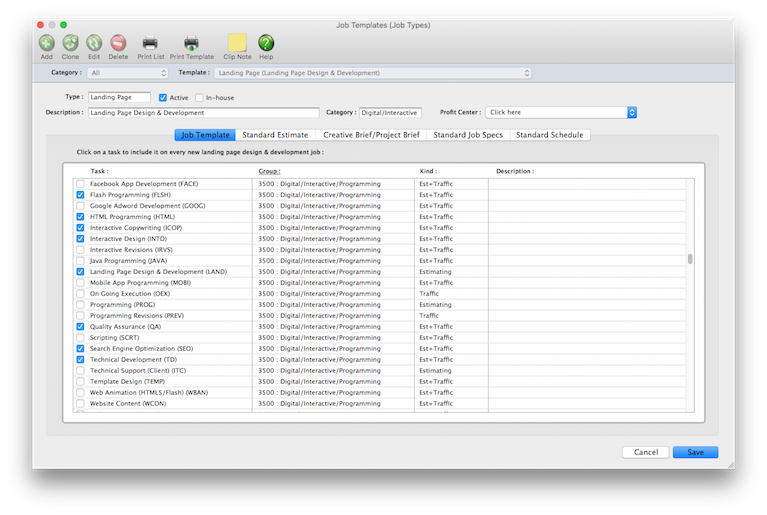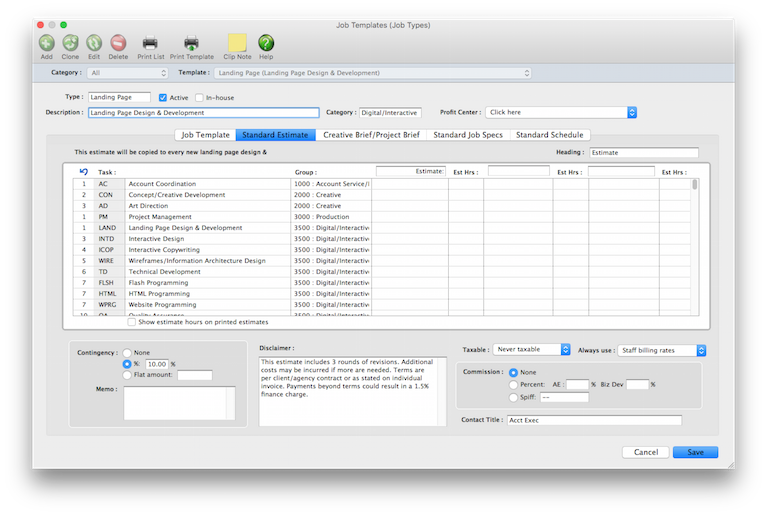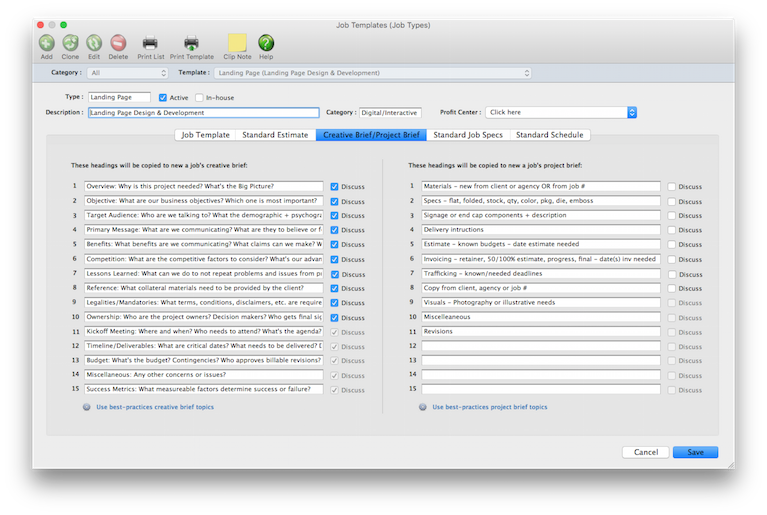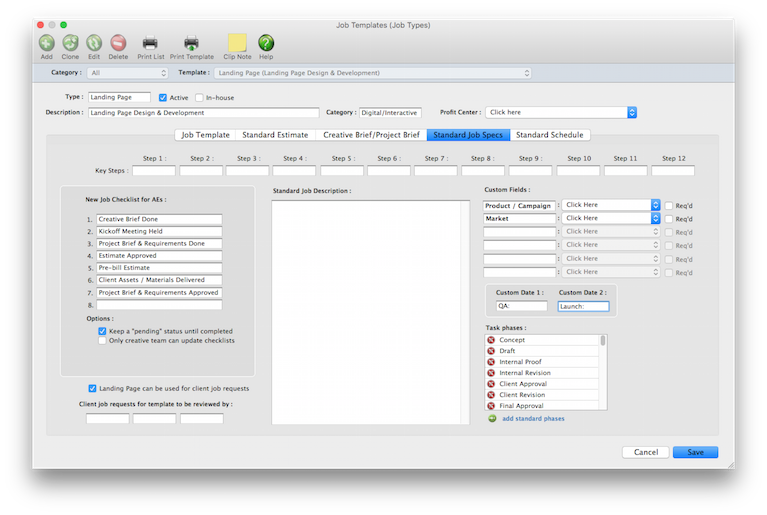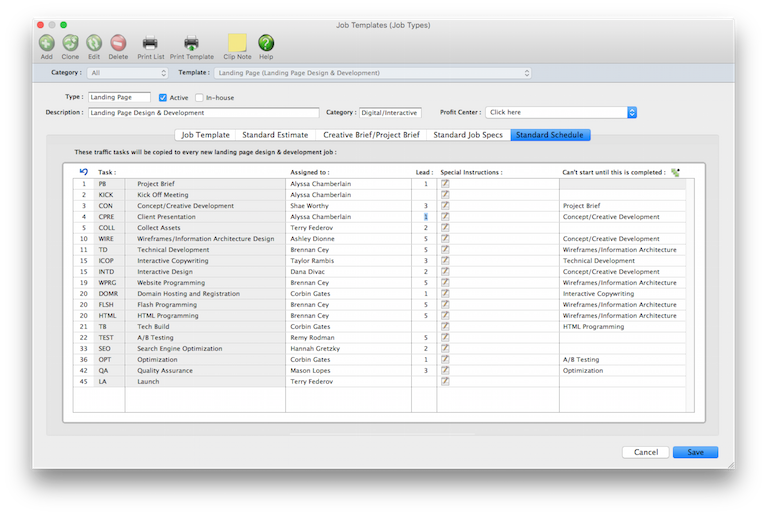
Job templates are used to automate opening jobs that are similar, since they produce the same
kind of work. You can create dozens of different job templates for every type of job you do
(e.g., print production, annual reports, radio, PR, print media, etc.). Templates make opening
new jobs virtually automatic: All a user needs to know to open a job is the client, the job
name, and the job template -- the job’s tasks, estimate options, contingency, and other
information is entered instantly
To set up job templates, choose Setup > Job Templates (Job Types).
HOW IT WORKS
• Job templates are created by job type.
• Every type of job can have a template that knows its specifications, estimate options,
traffic milestones, and tasks.
• Obsolete job templates can be made inactive to keep them from being used on new jobs.
• Each job type contains default subjects for the creative brief.
• When a job is opened with a job type, its default creative brief headings are copied to
the job. This way, the creative briefs will be consistent for all jobs of the same type.
• Job templates can be grouped by categories (e.g., advertising, creative, admin, events,
etc).
• Job templates can be limited to one profit center.
• In-house templates can only be used with the in-house client.
• The standard schedule supports task dependencies.
• Each template can have a standard estimate, which is copied to every new job. This can
make the template list something like a price list for standardized, routine jobs (e.g.,
homepage redesign, email blast, etc.)
• The template contains all of the topics for client-focused creative briefs and
internally-focused project briefs.
• Each template’s standard job specs.
• A new job checklist can keep a job from being worked on until the checklist is
completed.
• Clients using the Projectr web app can add job requests for selected job templates.
• Custom fields and values can be set up for each job template that are unique to each
different job type.
• Tasks on the standard schedule can be pre-assigned to staff members.
• You can templates any time without affecting currently open jobs (only new ones will be
affected).
How Clients & Profits uses job templates
job templates are used exclusively for speeding up the process of opening routine jobs. By
opening a new job with a job template, users save time since they don’t enter as much basic
detail about the work. job templates keep jobs of the same type more consistent, since they
include the same details.
job templates have three essential purposes: They standardize job tracking (i.e., job tasks),
trafficking (i.e., milestone headings), and estimating (i.e., estimate options, disclaimers, and
the contingency). You can assign certain tasks to a job template, so that every new job gets the
same tasks automatically. Jobs with job templates can be trafficked by job type, using the same
milestones. Most importantly, though, job templates standardize how estimates are made for jobs
with the same type. This ability lets you later compare how well you estimated your jobs by the
type of work you did.
When a job template is created, you’ll give it a name. The name is the job type, such as
Print Production, Annual Report, Brochure, TV spot, or whatever you need. What you call your
job types isn’t important, since it’s used inside the shop only. Clients usually don’t see
your job types. So consider how you name the templates: The names you use are important for
job tracking, however. Job lists show jobs by job type, conveniently summarizing similar
jobs together. Traffic reports show jobs and their milestones (the key events and approvals
for each job) by job type, for easier job tracking. And profitability reports compare
estimates, costs, billings, and profits by job type.
See the list of best-practice sample job templates (here).
LEARN ALL ABOUT JOB TICKETS in this Clients & Profits classroom video
training class (5:06 mins)
See how to :
© 2025 Clients & Profits, Inc.
